Bordeaux, Port of the Moon
By Stephanie Rytting
What is Bordeaux, Port of the Moon?
Bordeaux is a large, historic city in southwest France (the 9th largest city in France), known for being a center of wine production. The entire region around Bordeaux is filled with vineyards, which makes it a very popular destination with vacationers looking to indulge in wine tastings.
Disclosure: This article contains affiliate links. Making a purchase through an affiliate link will mean a small commission for this website. This will not affect your price. Privacy policy.
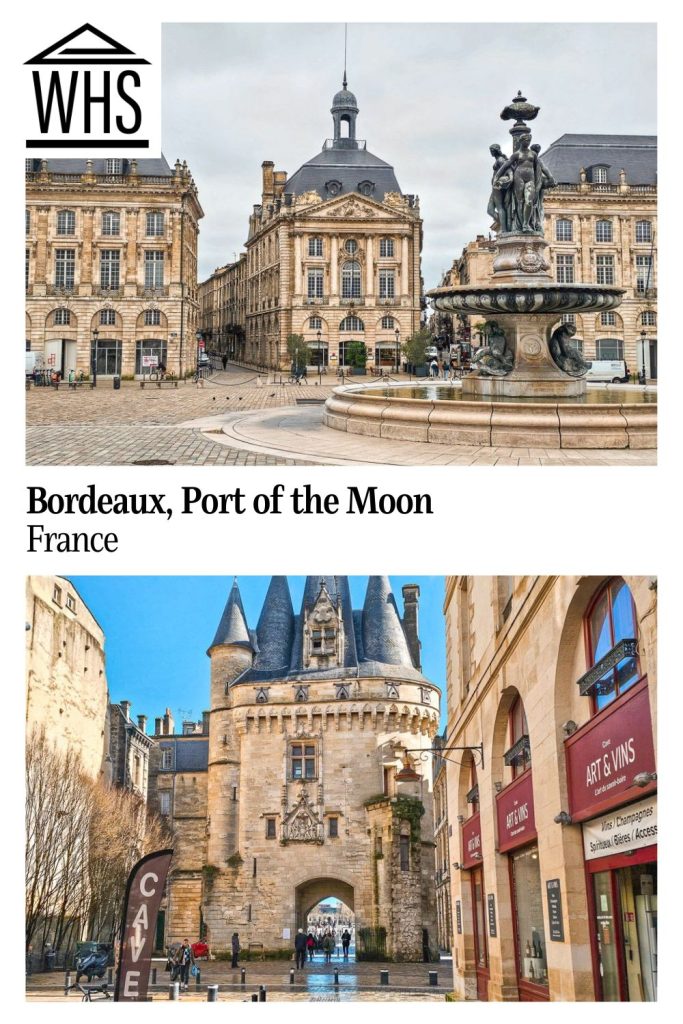
The city of Bordeaux has many ties directly to wine production. Les Chartrons is a neighborhood in Bordeaux that was reserved for wine producers. It flourished into a wealthy, exclusive community. Several immersive wine museums are in the city, teaching visitors about viticulture both locally and worldwide. The opulent style of Bordeaux can be directly tied back to the wealth coming from the wine trade. And Bordeaux’s most iconic square, Place de la Bourse, was specifically constructed to open to the Garonne River and be an impressive and awe-inspiring welcome to the city.
Why is Bordeaux, Port of the Moon, a UNESCO World Heritage site?
After Paris, Bordeaux has the most protected buildings of any city in France, with 347 landmarks being preserved and protected for their historic nature. Bordeaux is often referred to as a “mini-Paris”, thanks to the opulent architectural design. The dedication to the classical and neo-classical design around the city (from the early 18th century to today) is part of what gave Bordeaux a UNESCO designation. According to UNESCO, “Bordeaux is exceptional in the unity of its urban and architectural classical and neo-classical expression, which has not undergone any stylistic rupture over more than two centuries.”
The Port of the Moon, Bordeaux’s main port, was a huge reason for Bordeaux’s explosion of wealth and prosperity. It allowed the city’s inhabitants to easily trade with Britain and the Americas. The trading connections “provided this cosmopolitan town, in the age of Enlightenment, an unparalleled prosperity that provided for an exceptional urban and architectural transformation.”
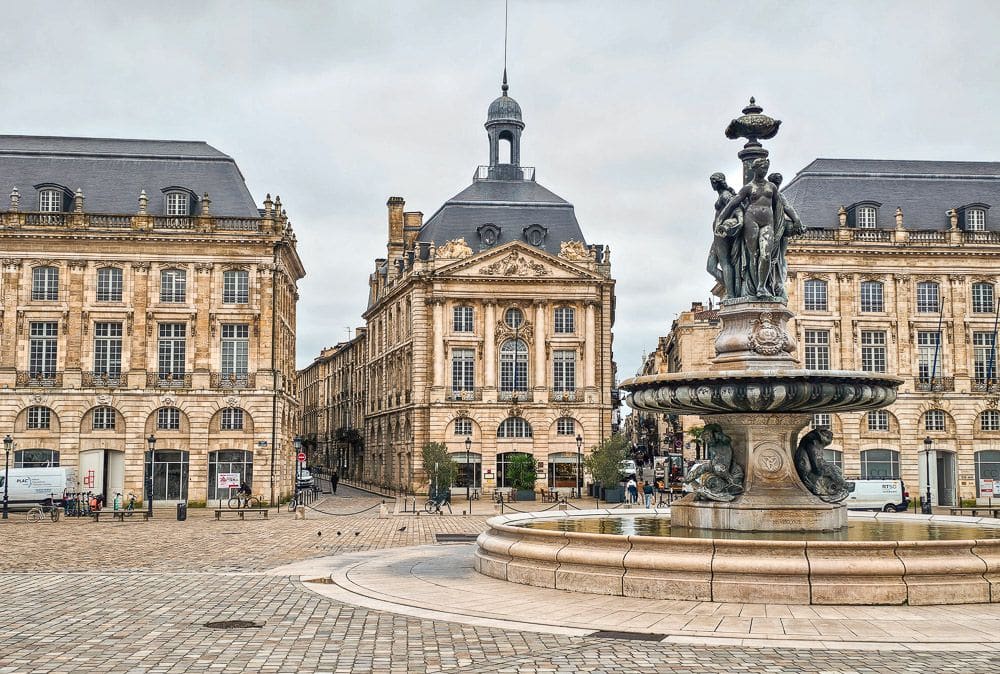
What can you expect on a visit to Bordeaux?
I absolutely loved Bordeaux – the city is incredibly beautiful and has so much to offer. The streets and architecture are truly stunning. The entire city feels like a living museum.
Of course, you must visit Le Musée du Vin et du Négoce (the Museum of Wine and Trade, in the Chartrons neighborhood, located in a cozy wine cellar), and the Cité du Vin (a modernistic museum full of high-tech displays and interactive exhibits about wine), to really get an understanding of the wine culture of the region.
Bordeaux has six city gates left over from medieval times. The city walls connecting the gates have been destroyed, but the gates themselves remain. They will surprise you as they turn up around the city. The Porte Cailhau and La Grosse Cloche are the two biggest, most ornate, and most famous gates, and you can go up in the tower of Porte Cailhau.
For one of the best views in the city, head to the Pey Berland Tower. This is the bell tower associated with the Saint André Church, Bordeaux’s main cathedral. Because of the soft, sandy soil, the bell tower was actually built as a separate structure from the cathedral. You can climb the 66 meters (216 ft) to admire the views over Bordeaux from the top.
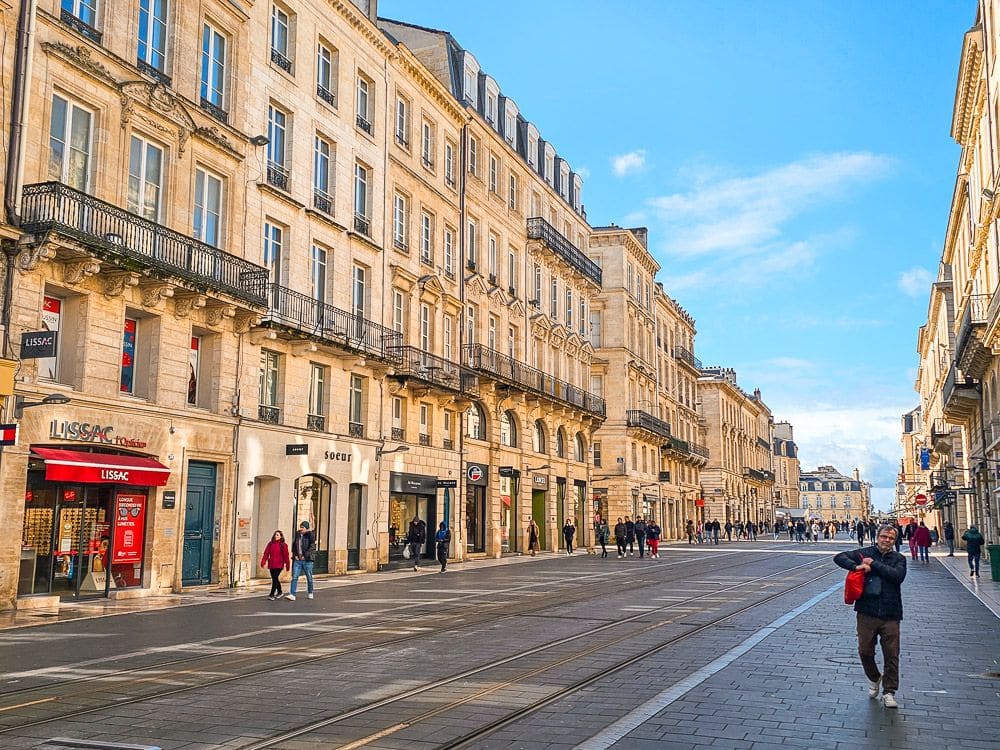
One of the most iconic spots in Bordeaux is the Place de la Bourse, with the Miroir d’Eau. Place de la Bourse was specifically constructed and designed to impress foreign traders as they arrived in the city. It opens to the river to welcome the newly-arriving ships. The Miroir d’Eau is a relatively new installation. It is a large, shallow reflecting pool that sits right in front of the square.
The Bassins des Lumières is such a cool and inspiring concept, as it’s an art and light show set up in an old Nazi submarine bunker from World War II. The bunker is made of concrete and very austere. It has small walkways around large basins of water in the middle of the large rooms. The bunker is kept dark, and a dynamic art show set to music is projected onto the walls, creating a breathtaking show.
Bordeaux is also famous for being the birthplace of canelés, caramelized pastries with a custard center. You must stop at one of the many shops dotting the city center that sell these unique treats.
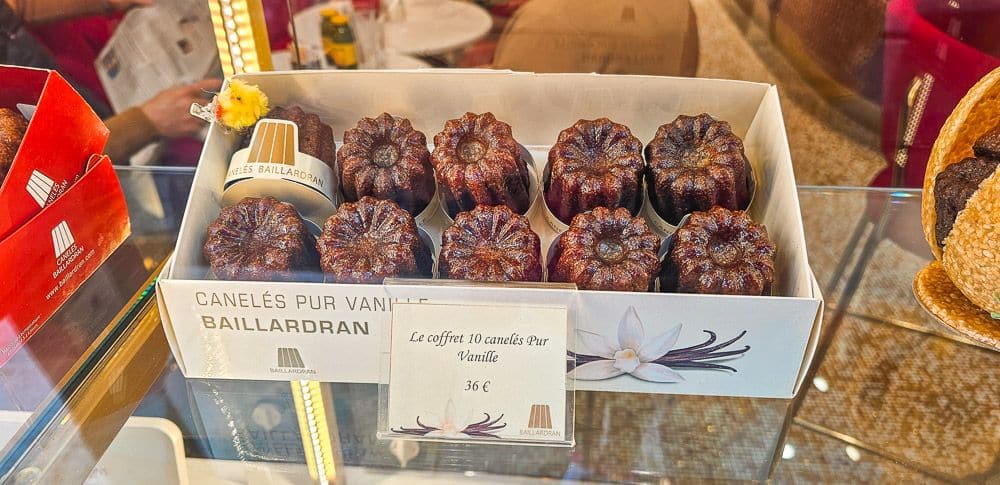
You’ll also want to swing by the Jardin Publique, a beautiful public garden, the Rue Sainte Catherine, the longest shopping street in Europe at two kilometers long, the Grand Theatre of Bordeaux, and the Marché des Capucins, a sprawling, dynamic food market.
Is Bordeaux, Port of the Moon, worth visiting?
Absolutely, Bordeaux is worth visiting. The city is immaculate and gorgeous, it has a thriving food scene, there are plenty of attractions and things to do, and just wandering the streets or strolling by the river is a delightful way to spend the day. Plus, it’s centrally located to a host of other interesting villages and destinations, making for easy day trips from the city.
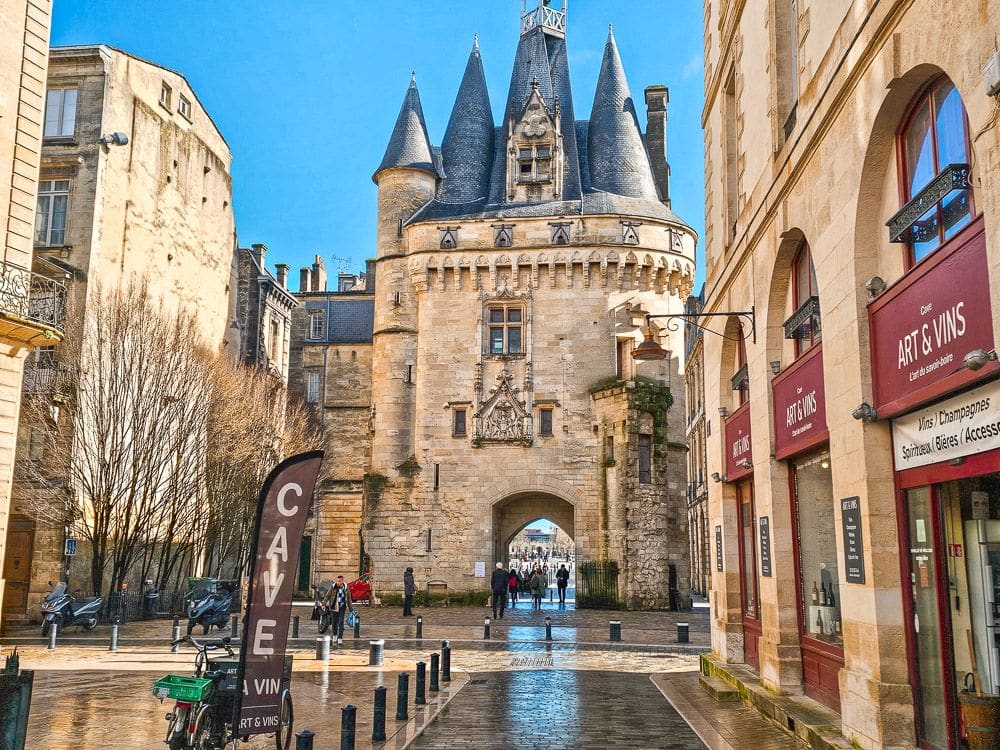
What sorts of travelers would like Bordeaux?
Anyone even vaguely interested in wine tasting, production, or history will love Bordeaux. And even if you’re not a wine drinker (like myself, actually), I still was fascinated to learn about the history and culture surrounding wine in Bordeaux.
History buffs will have plenty to learn about in Bordeaux, and if you’re here for the architecture, Bordeaux will be a treat. If you’re wanting a relaxing holiday where you can stroll a city and enjoy cafe culture, Bordeaux is an excellent spot for you as well. And if you like to go-go-go and see and do everything, there is plenty in Bordeaux to keep you busy.
In short, I think Bordeaux can be a great destination for any traveler who enjoys cities. If you are not a city person, however, Bordeaux might not be the place for you.
Use the map below to find your accommodations:
Tips for visiting Bordeaux
The first tip I would have for visiting Bordeaux is to just go. Many travelers don’t consider this city as a possibility when planning their France vacations.
Second, consider the season. If you want to visit vineyards and do wine tastings, then spring, summer, and fall will give you the most beautiful vistas of rows and rows of leafy vines. The vines are dormant in winter, budding in spring, in full bloom in summer, and turn colors during the harvest season in fall. Fall is also the busiest season for the wineries.
Southern France gets very hot in summer. Be prepared for hot days and more crowds during July and August, especially.
You can easily get here by train from many other major cities in France. Indeed, there is a 2-hour high-speed direct train between Paris and Bordeaux that leaves multiple times throughout the day. I’d plan for 2 days to see the city and another 1-3 days for day trips and wine excursions in the countryside. The UNESCO site called Jurisdiction of Saint-Emilion – which also involves the wine trade – would be a perfect day trip.
If you’re thinking of doing some wine-tasting in the vineyards of Bordeaux outside the city, it’s safest to take a tour.
Where is Bordeaux, Port of the Moon?
Bordeaux is in southwest France, above the border of Spain and about 60 km/37 miles from the Atlantic Ocean.
The nearest big city is Toulouse, which is 2 hour 45 minutes away by car. You can find various paid parking lots around Bordeaux if you do decide to arrive by car.
Compare rental car prices here.
From Toulouse, you can take the train, which also takes about 2 hours 45 minutes. It’s very easy to get around by train, as you can just purchase an inexpensive ticket online between Toulouse Matabiau station and Bordeaux Saint Jean station.
Use the form below to book your train tickets:
For more information about Bordeaux, its opening hours and admission fees, see its official website.
Have you been to Bordeaux? If so, do you have any additional information or advice about this UNESCO World Heritage site? Please add your comments below!
